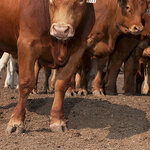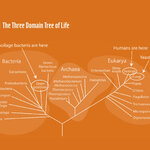In 2001 there was a massive outbreak of Foot-and-Mouth Disease (FMD) in the United Kingdom. This caused, in terms of prices at that time £8bn / $13–16bn of loss to the UK economy, and much distress in agricultural communities.
One of the most memorable things of that time was images of cattle and other carcasses being burned.
There was much argument at the time whether the outbreak should be contained by culling or vaccination. Foot-and-mouth vaccination has a number of problems. ‘Dead’ vaccines have the property of sometimes ‘coming to life again’ through…
Microbiology

Whole genome sequencing has shown drug-resistant bacteria were transmitted from animals to humans in two disease outbreaks that occurred on different farms in Denmark.
Drug-resistant bacterial infections pose a significant challenge to public health and may have severe and sometimes fatal consequences. As the costs of whole genome sequencing methods continue to plummet and the speed of analysis increases, it becomes increasingly attractive for scientists to use whole genome sequencing to answer disease-related questions.
The results confirm animal-to-human transmission of methicillin-…

The bacterial foodborne pathogen Listeria monocytogenes is the causative agent of listeriosis, a debilitating disease linked with about 2,500 illnesses and more than 500 deaths in the U.S.A. each year. A characteristic feature of L. monocytogenes is its ability to grow at cold temperatures and even in the presence of high concentrations of salt - traditional food preservation techniques which arrest the growth of most other pathogens.
The bacterium protects itself from such stresses by twisting into a protective corkscrew type shape in an effort to reduce its exposure to the stress—in the…

Viruses and genes interact in a way that may increase the risk of developing schizophrenia significantly - even in a developing fetus, according to an international team which scanned the genomes of hundreds of sick and healthy people to see if there is an interaction between genes and a very common virus, cytomegalovirus, and to see whether the interaction influences the risk of developing schizophrenia.
And it does, they concluded.
Women who have been infected by the virus - around 70 % have - will see a statistically significant increased risk of giving birth to a child who later develops…

It's among the most ancient of questions in history, covering metaphysics, chemistry, biology and theology: What are the origins of life on Earth?
A new experiment simulating conditions in deep space found that the complex building blocks of life could have been created on icy interplanetary dust and then carried to Earth, jump-starting life. The numerical model found that conditions in space are capable of creating complex dipeptides – linked pairs of amino acids – that are essential building blocks shared by all living things. The discovery opens the door to the possibility that these…

Scientists say they have done laboratory resurrections of several 2 to 3 billion-year-old proteins, ancient ancestors of the enzymes that enable today's antibiotic-resistant bacteria to shrug off huge doses of penicillins, cephalosporins and other modern drugs.
Antibiotic resistance existed long before Alexander Fleming discovered the first antibiotic in 1928. Genes that contain instructions for making the proteins responsible for antibiotic resistance have been found in 30,000-year-old permafrost sediment and other ancient sites. The new study research focused on beta-lactamases, enzymes…

Studies by the U.S. Department of Agriculture (USDA) Agroecosystems Management Research Unit in Lincoln, Nebraska are shedding some light on the microbes that dwell in cattle manure—what they are, where they thrive, where they struggle, and where they can end up.
In one project, ARS microbiologist Lisa Durso used fecal samples from six beef cattle to identify a core set of bovine gastrointestinal bacterial groups common to both beef and dairy cattle. She also observed a number of bacteria in the beef cattle that had not been reported in dairy cows, and identified a diverse…

An international group of scientists has discovered a new class of molecular compounds capable of killing the influenza virus.
You learned this from your parents; too much even of a good thing can be a killer and that same idea has led to manipulating an enzyme that is key to how influenza replicates and spreads. The newly discovered compounds interrupt the enzyme neuraminidase's facilitation of influenza's spread.
Tamiflu and another anti-influenza drug, Relenza, focus on interrupting neuraminidase's ability to help influenza detach from an infected cell's surface by digesting…

Species facing widespread and rapid environmental changes can sometimes evolve quickly enough to dodge the extinction bullet.
Studies have shown that the more gradual the change, the better the chances for 'evolutionary rescue', that process of mutations occurring fast enough to allow a population to avoid extinction in changing environments. One obvious reason is that more individuals remain alive when change is gradual or moderate, meaning there are more opportunities for a winning mutation to emerge.
Biologists using populations of microorganisms have shed light on a second reason…

It's the weekend, which means it is time for scientists, science journalists, book authors and intellectually curious readers to think about microbiology. And that means beer. Beer is actually safer to drink than water. You didn't know that? Let's talk some biology.
The master ingredient in beer is yeast. That's a microbe! So if you do experiments with beer this weekend, you are advancing the world of science. If you make beer, you are a microbiologist. If you drink beer, you are a microbiologist. Microbiologists understand beer and bacteria and stuff, which is why…